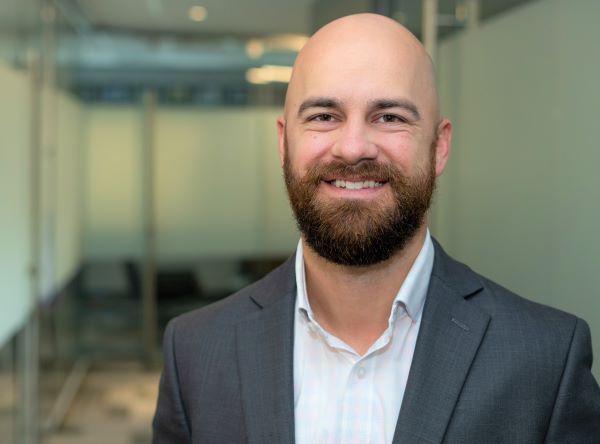Retirement Risk Made Simple
Key Takeaways:
-
Retirement brings new risks—like relying on withdrawals and market timing—that require a more deliberate plan.
-
There’s no one “safe” withdrawal rate, so flexibility matters more than fixed rules.
-
Poor market returns early in retirement can hurt long-term outcomes, making sequence-of-returns planning essential.

It’s no secret that retirement investing can seem more challenging, complex, or even foreign to new retirees. Investing doesn’t completely change in retirement. However, the retirement phase simply adds a few more things to consider for retirees. The first step to see if you should be investing differently in retirement is to identify what is different about the retirement phase and what unique risks retirement brings.
The Retirement Phase of Investing
Social Security, Medicare, and withdrawing money from your portfolio (instead of adding to it) are just a few things that make the retirement phase different from the working phase, and maybe even a little scary. Very few retirees understand how these three things actually work.
In fact, pre-retirees generally launch into retirement with dozens of unanswered questions. How much Social Security will I receive? When should I begin receiving Social Security benefits? Will I be able to cover my medical costs with Medicare? What will my Medicare costs be? Should I get a supplement or an advantage plan? How much can I afford to withdraw from my portfolio and not run out of money? How should I be invested?
The questions go on and on. But the first step to finding the best investment strategy for you is to begin mapping these things out in a financial plan. Doing so will help you begin to put together a projection of your future cash flows. This means you’ll be able to project how much money you may need to withdraw from your portfolio each year.
For some, their Social Security and pension income is enough to cover all their expenses. For others, starting to withdraw from an investment portfolio is an immediate necessity. And then for others, perhaps withdrawals may only be needed for a short period of time, until other income sources kick in. The answers to all these questions will help to build out an accurate projection of future cash flows, which should be the foundation of your investment strategy.
Unique Retirement Risk #1 – The Risk of Running out of Money
There are a few unique risks that exist during the retirement phase that do not exist during other phases. The first and one of the most well-known risks is the obvious risk of running out of money. If you withdraw too much from your portfolio too soon, you could be left with nothing at some point later in life.
This risk causes some to be deathly afraid to withdraw anything from their portfolio. It causes some to work longer than they need to and others to miss out on what could have been potentially fulfilling uses for their money. Neither running out of money nor hoarding it will lead to a positive retirement experience.
So, what’s the magic formula for retirement withdrawals? What is the perfect withdrawal percentage to guarantee optimal retirement success? Is it 4% like the old “4% withdrawal rule” suggests (essentially taking 4% of your portfolio each year of retirement and adjusting for inflation)? To suggest that any broad rule of thumb can be effectively executed for all would be misleading and irresponsible.
There is no magic withdrawal rate because everyone’s situation is very different, and each situation changes over time. I’ve done countless financial plans over the years, and I can’t remember one where a client needed the same amount of withdrawals, percentage-wise, or dollar-wise, from the start of retirement until the end of retirement. Things change.
Someone retiring at 60 might need to take extra withdrawals until Social Security kicks in. But perhaps once it does, withdrawals can be drastically decreased or even stopped altogether. Others may retire at 67 and start retirement with one withdrawal rate but adjust that at 73 once they begin taking Required Minimum Distributions.
Numerous scenarios affect retirement cash flows, which means you likely won’t have a consistent withdrawal rate.
Why does this matter? Because understanding your dependence on withdrawals during every phase of retirement is a crucial and foundational part of building out your investment strategy.
Unique Risk #2 – Sequence of Returns Risk
Any financial plan that projects future cash flows and portfolio values will require one major assumption: future rate of return. Since we don’t know what type of return each year will bring, most retirement calculators ask for an expected average return.
The problem is that the order of those returns can make a big difference when you’re taking withdrawals from the portfolio. Why is that? Imagine the following example of a 3-year retirement.
Bill has a portfolio worth $1 million. Bill’s portfolio earns 30%, 0%, and 0%, respectively, in a 3-year period, which means his average return is 10% per year. He’s also withdrawing $50,000 from his portfolio at the end of each year. In this example, he would have $1,150,000 at the end of 3 years.
But let’s see what happens when Bill starts retirement in a down market. Let’s assume in scenario 2 that Bill’s portfolio earns -20%, -20%, 70% (a much more volatile portfolio), and is still withdrawing $50,000 per year. You’ll notice that the average return is still 10% per year. In this example, Bill would only have $885,000 at the end of 3 years. That is a $265,000 difference after just 3 years! How did this happen?
The problem is that Bill was withdrawing money from investments that lost value. He was selling his stocks and bonds at a point that was not ideal, where they were worth less than when he started retirement. The key to overcoming sequence of returns risk and one key to better investment outcomes is to avoid selling any investment at a loss.
I know you probably read that and think, “Duh! I don’t want to sell anything at a loss, but what choice do I have if the market is down?” Well, you have more influence over that point than you might think. Addressing sequence of returns risk is a must when talking about retirement investing.
Unique Risk #3 – Not Enough Time to Recover from Market Declines
Another common concern for retirees that is unique to the retirement phase is the concern that when the market declines, they may not have enough time (left in their lives) to wait for the recovery. This concern doesn’t exist during our working years because you’re younger and most think they have plenty of time to wait for the market to recover.
Some retirees have shared a concern over “time” as early as in their mid-60s. But the reality is that life expectancy in America is 84.2 years for a 65-year old male and 86.8 years for a 65-year old female.
While it’s not guaranteed, on average, folks may have more time left than they think. Of course, health concerns play a major role in this and can lower life expectancy dramatically. However, for those with no reason to assume otherwise, it’s very possible for a 65-year-old to live to 85, 90, or even longer. That means retirement could last 20 years or more.
In fact, according to a U.S. Census Bureau study cited by the Motley Fool, the average retirement lasts 18 years. The same article from 2018 cited that a 62-year-old woman had a 31% chance of living to age 90 (the odds fell to 19% for a 62-year-old male).
What does this mean? You might have more time than you think to let your investments recover. But there is a difference between the amount of time you’ll live and the time you have until you need to take withdrawals.
Retirement Investing, or Investing at Any Age
Retirement investing and investing at any age depends on your specific situation. It starts with a plan, understanding future cash flows, and understanding the unique risks that retirement may bring. Once you do, you can implement strategies to address those risks. Investing always involves risk. Retirement investing adds a few new risks for retirees that don’t exist for younger investors. All of these factors should be taken into account when putting together a comprehensive financial plan. Seek help from a CERTIFIED FINANCIAL PLANNER™ professional to find the best solution for your specific situation.
Want more help? Let’s chat.

Joe Allaria, CFP®
Wealth Advisor | Partner


